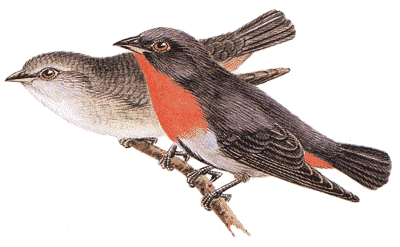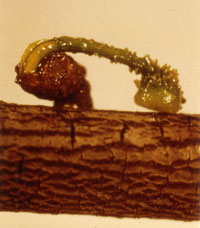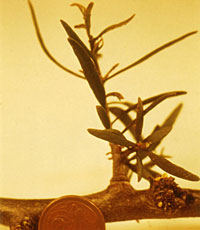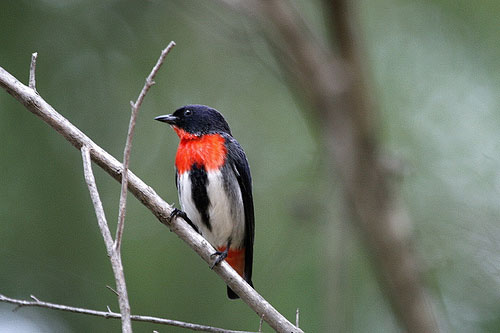Mistletoe dispersal - birds
|
Mistletoe bird and dispersal
Like many fruit-eating birds, these species have a relatively simple digestive tract, so that the seed passes through the bird rather quickly. In the Australian mistletoe bird defecation usually occurs 4-12 minutes after ingestion, and in the phainopepla 12-45 minutes after ingestion. Even so, the bird digests a significant amount of glucose from the sticky layer, which is still intact when the seed is defecated.
The seeds therefore emerge from the bird intact and undamaged. The mistletoe bird performs a number of twisting movements when defecating, wiping the seeds on to the branch on which the bird is perched, rather than dropping them to the ground. The sticky layer dries and cements the seed in place on the branch, where it germinates spontaneously. It is thought that there are germination inhibitors in the fruit coat which prevent premature germination before ingestion. The mistletoe plant and the mistletoe bird thus show complementary adaptations for mutual benefit, the plant attaining efficient dispersal and the bird ensuring a continuing food supply.
|
|
Germination is normal, except that even the primary root of the embryo is modified into a haustorial pad, which emerges first (far left). The haustorial pad becomes cemented to the host stem, like a holdfast, and the haustorium grows into the host from its base. Subsequent development of the mistletoe plant is like any normal plant, except that it has a haustorium embedded in the host instead of a root system in the soil (left).
|
![An Australian Government Initiative [logo]](/images/austgovt_brown_90px.gif)





